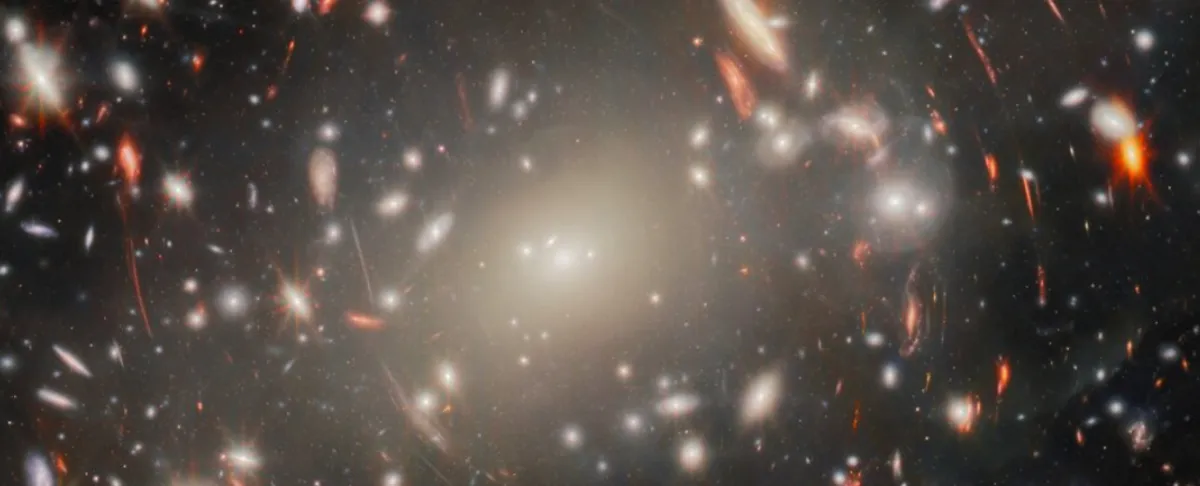
The James Webb Space Telescope has achieved a remarkable milestone by capturing its deepest view of a single target, revealing stunning spinning arcs of light that represent galaxies from the distant past. This groundbreaking image, released by the European Space Agency (ESA) on Tuesday, required over 120 hours of focused observation, making it the longest duration that Webb has concentrated on a single celestial object.
At the heart of this captivating image lies a massive cluster of galaxies known as Abell S1063, located approximately 4.5 billion light-years from Earth. While this cluster serves as a focal point, it is not the primary target of the observation. The immense gravitational field of such colossal celestial bodies bends the light from galaxies situated behind them, effectively acting as a natural magnifying glass. This phenomenon, known as gravitational lensing, creates the warped arcs of light surrounding Abell S1063, which are of particular interest to scientists.
By peering into the depths of space, the James Webb Space Telescope allows astronomers to look back in time, offering insights into the formation of the first galaxies during a significant era known as the Cosmic Dawn. This period occurred when the universe was merely a few million years old, and understanding this phase is crucial for unraveling the evolution of galaxies. The ESA has emphasized that the data gathered from this deep observation could shed light on how these early galaxies formed and evolved over time.
The stunning image comprises nine separate captures, each representing different near-infrared wavelengths of light. This multispectral approach enables scientists to analyze the universe's structures and dynamics in unprecedented detail. Since its launch and commencement of operations in 2022, the James Webb Space Telescope has opened the door to a new era of astronomical discoveries.
The insights gained from the Webb telescope have already challenged existing theories, revealing that galaxies in the early universe are significantly larger than what scientists previously anticipated. This unexpected finding has led researchers to reconsider and refine their understanding of cosmic development. As the James Webb Space Telescope continues its mission, it promises to further revolutionize our comprehension of the universe and its intricate workings.